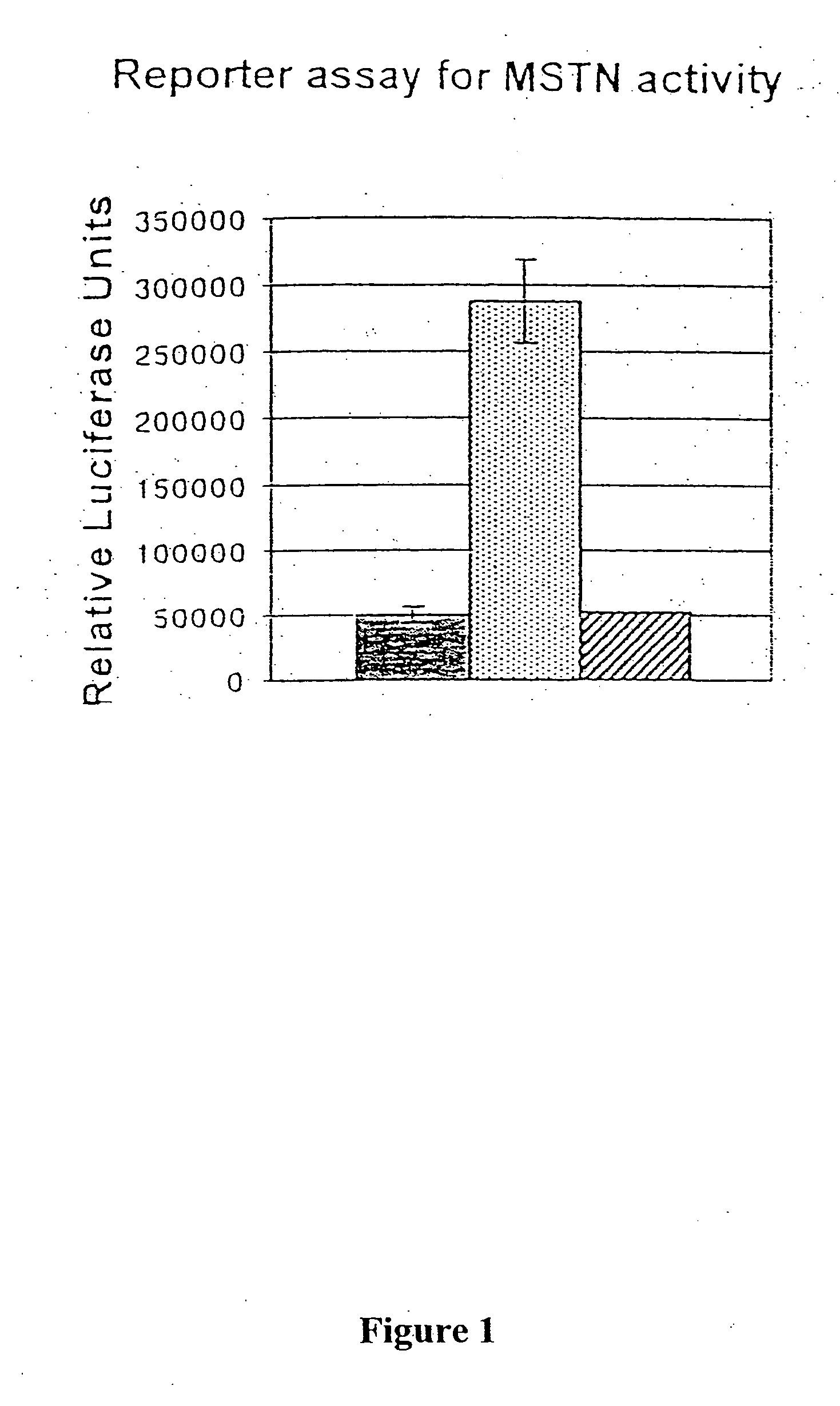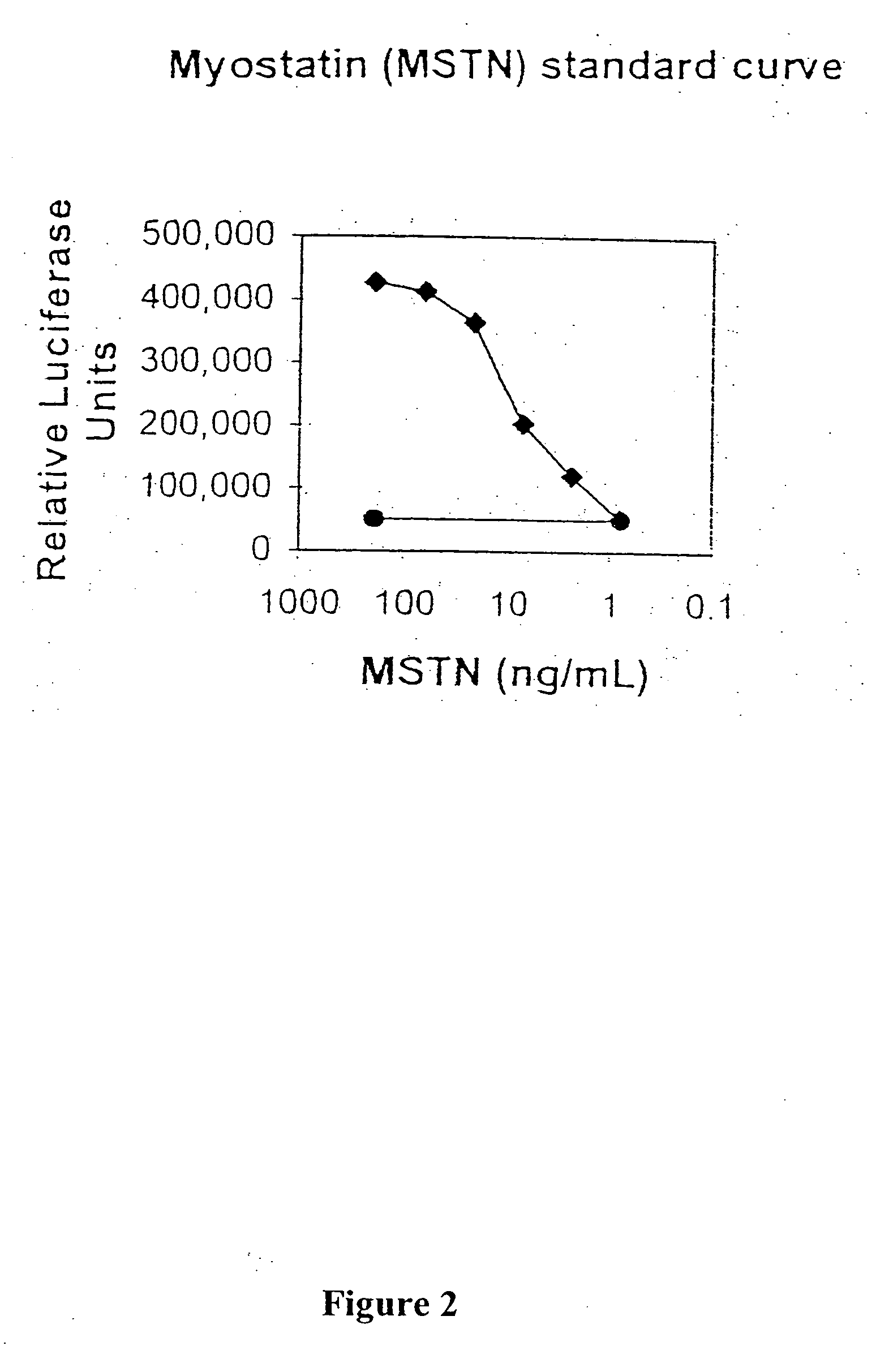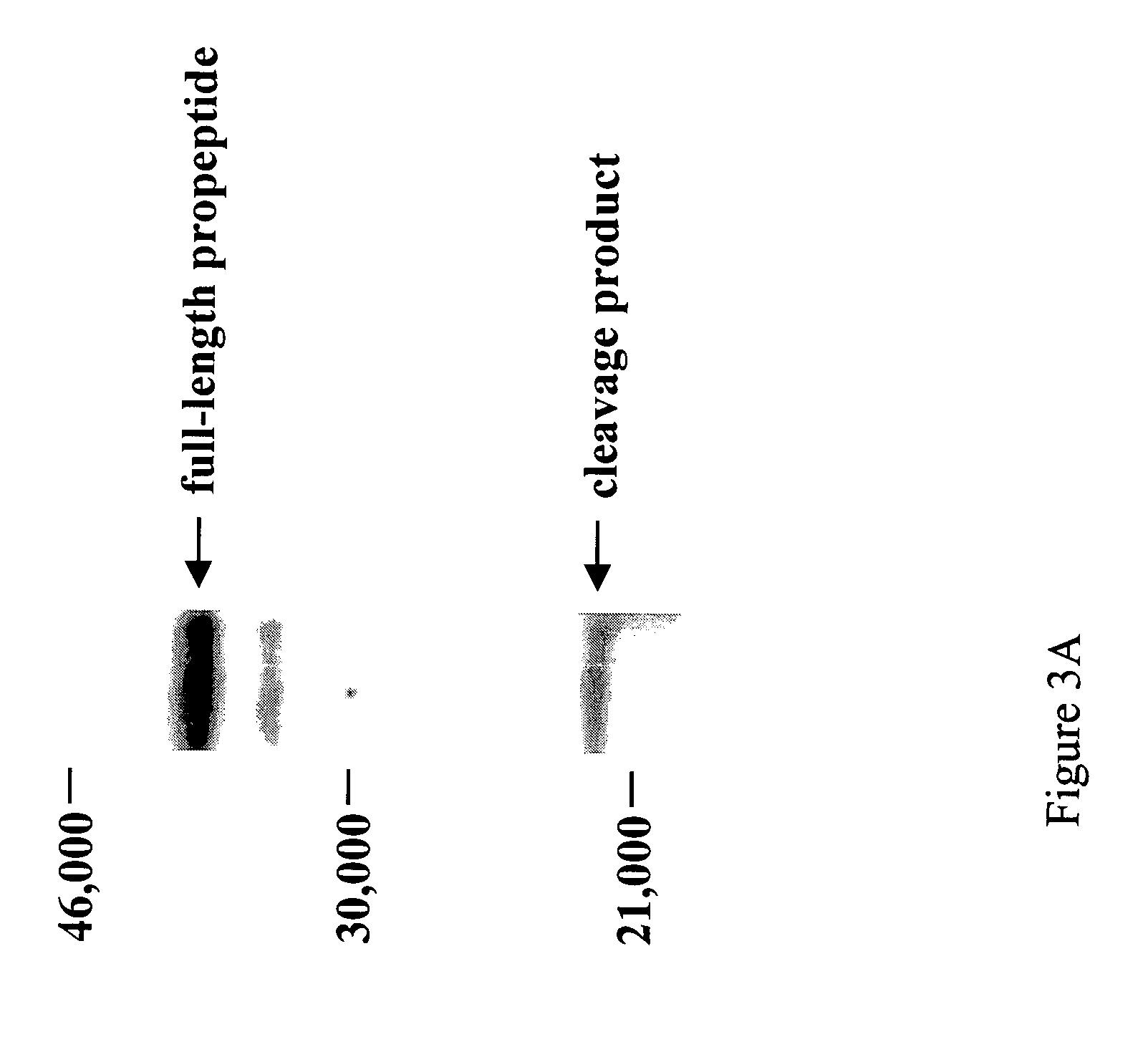Metalloprotease activation of myostatin, and methods of modulating myostatin activity
- Summary
- Abstract
- Description
- Claims
- Application Information
AI Technical Summary
Benefits of technology
Problems solved by technology
Method used
Image
Examples
example 1
BMP-1 / TLD Metalloprotease Family Members Cleave Myostatin Pro Peptide
[0090] This example demonstrates that the members of the bone morphogenic protein-1 / Tolloid (BMP-1 / TLD) family of metalloproteases cleave the myostatin pro peptide.
[0091] Five hundred ng of purified myostatin pro peptide or of purified latent myostatin complex comprising the pro peptide and C-terminal dimer (Lee and McPherron, supra, 2001) was incubated overnight at 37° C. with 100 ng purified BMP-1, mTLD, mTLL-1, or mTLL-2 (Scott et al., Devel. Biol. 213:283-300, 1999, which is incorporated herein by reference). Reaction products were analyzed by sodium dodecyl sulfate-polyacrylamide gel electrophoresis (SDS-PAGE) followed by western blot analysis using antiserum raised against the myostatin pro peptide (Lee and McPherron, supra, 2001).
[0092] A discrete proteolytic cleavage product of the pro peptide was detected in each reaction containing one of the four proteases, but not in control reactions that did not co...
example 2
Metalloprotease Cleavage of Myostatin Pro Peptide Activates Latent Myostatin
[0093] This example demonstrates that cleavage of the myostatin pro peptide by a BMP-1 / TLD metalloprotease activates latent myostatin.
[0094] Purified myostatin pro peptide and C-terminal dimer complex was incubated with mTLL-1, then examined using a reporter gene assay that specifically detects myostatin activity. A204 rhabdomyosarcoma cells were transfected with the pGL3-(CAGA)12 luciferase reporter gene construct, which comprises the luciferase coding sequence linked to the TGF-β responsive CAGA sequence from the promoter of the TGF-β inducible PAI-1 gene (Thies et al., supra, 2001). The transfected cells were contacted with either untreated pro peptide / C-terminal dimer complex or complex that had been pre-incubated with mTLL-1. Incubation of the complex with mTLL-1 dramatically increased the amount of luciferase activity detected in the reporter cell assay, whereas no change was observed in cells treate...
example 3
Peptide Substrates for Tolloid Family Members
[0096] A series of three peptides each of 10, 20, 30, 40, or 50 amino acid residues was synthesized based on the sequence of the myostatin pro peptide, and encompassing the BMP-1 / TLD metalloprotease cleavage site (amino acid residues “RD” as shown in bold, below, in wild type peptides; SEQ ID NOS:9, 12, 15, 18, and 21). Peptides in which the arginine residue at the P1 position just upstream of the cleavage site was changed to a glutamine residue (SEQ ID NOS:10, 13, 16, 19, and 22; see bold), and peptides in which the aspartic acid at the P1′ position just downstream of the cleavage site was changed to an alanine (SEQ ID NOS:11, 14, 17, 20, and 23; see bold), also were synthesized. The sequences of the peptides are shown below:
50-merKDVIRQLLPKAPPLRELIDQYDVQRDDSSDGSLEDDDYHATTETIITMPT(SEQ ID NO:9)KDVIRQLLPKAPPLRELIDQYDVQQDDSSDGSLEDDDYHATTETIITMPT(SEQ ID NO:10)KDVIRQLLPKAPPLRELIDQYDVQRADSSDGSLEDDDYHATTETIITMPT(SEQ ID NO:11)40-mer:QLLPKAPPL...
PUM
| Property | Measurement | Unit |
|---|---|---|
| Mass | aaaaa | aaaaa |
| Fat content | aaaaa | aaaaa |
| Disorder | aaaaa | aaaaa |
Abstract
Description
Claims
Application Information
 Login to View More
Login to View More - R&D
- Intellectual Property
- Life Sciences
- Materials
- Tech Scout
- Unparalleled Data Quality
- Higher Quality Content
- 60% Fewer Hallucinations
Browse by: Latest US Patents, China's latest patents, Technical Efficacy Thesaurus, Application Domain, Technology Topic, Popular Technical Reports.
© 2025 PatSnap. All rights reserved.Legal|Privacy policy|Modern Slavery Act Transparency Statement|Sitemap|About US| Contact US: help@patsnap.com



